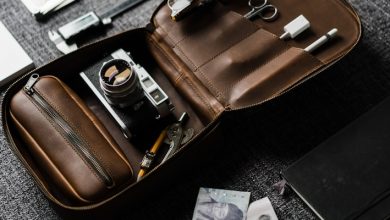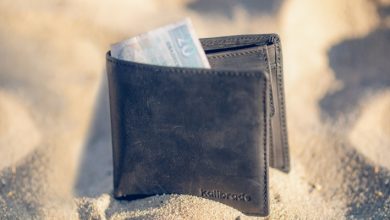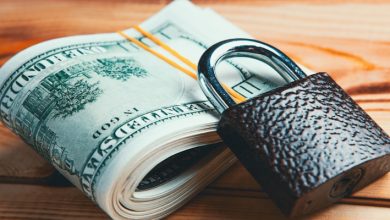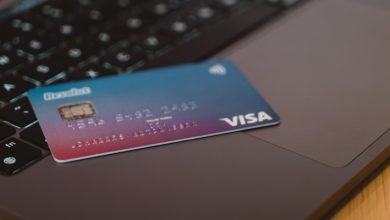How to Set Up Multi-Factor Authentication for Your Wallet

- Understanding the importance of multi-factor authentication
- Step-by-step guide to setting up multi-factor authentication for your wallet
- Choosing the best multi-factor authentication methods for enhanced security
- Common mistakes to avoid when setting up multi-factor authentication
- Tips for managing multiple authentication factors for your wallet
- Exploring the benefits of using multi-factor authentication for financial transactions
Understanding the importance of multi-factor authentication
Implementing multi-factor authentication (MFA) is crucial for enhancing the security of your wallet. MFA adds an extra layer of protection by requiring users to provide multiple forms of identification before accessing their accounts. This significantly reduces the risk of unauthorized access, as even if one factor is compromised, the others will still keep your wallet secure.
One of the most common factors used in MFA is something you know, such as a password or PIN. This is paired with something you have, like a smartphone or hardware token. Some systems also incorporate biometrics, such as fingerprint or facial recognition, as an additional layer of security. By combining these different factors, MFA ensures that only authorized users can access your wallet.
Without MFA, your wallet is vulnerable to various cyber threats, including phishing attacks, brute force attacks, and password breaches. Hackers are constantly evolving their tactics to bypass traditional security measures, making it essential to adopt more advanced methods like MFA. This extra layer of security can make all the difference in safeguarding your digital assets.
Step-by-step guide to setting up multi-factor authentication for your wallet
To set up multi-factor authentication for your wallet, follow these simple steps:
- First, log in to your wallet account using your username and password.
- Once logged in, navigate to the security settings section of your account.
- Look for the option to enable multi-factor authentication (MFA) and click on it.
- Choose the type of MFA you want to set up – options may include SMS codes, authenticator apps, or hardware tokens.
- Follow the on-screen instructions to link your chosen MFA method to your account.
- Verify your identity by entering a code sent to your phone or generated by your authenticator app.
- Once verified, MFA will be enabled for your wallet account, adding an extra layer of security.
By setting up multi-factor authentication for your wallet, you can help protect your funds from unauthorized access and ensure that only you can access your account. It is a simple yet effective way to enhance the security of your digital assets.
Choosing the best multi-factor authentication methods for enhanced security
When setting up multi-factor authentication for your wallet, it is crucial to choose the best methods that will provide enhanced security for your digital assets. There are several options available, each with its own strengths and weaknesses.
- One popular method is SMS verification, where a code is sent to your phone that you must enter to access your wallet. While this method is convenient, it is not the most secure as SIM swapping attacks have become more common.
- Another option is using a mobile authenticator app such as Google Authenticator or Authy. These apps generate a time-based code that you must enter along with your password. This method is more secure than SMS verification as it is not susceptible to SIM swapping attacks.
- Biometric authentication, such as fingerprint or facial recognition, is also a strong option for multi-factor authentication. This method adds an extra layer of security as it requires something unique to you to access your wallet.
- Hardware tokens, such as YubiKeys, are another effective method for multi-factor authentication. These physical devices generate one-time codes that you must enter to access your wallet, adding an extra layer of security beyond passwords.
When choosing the best multi-factor authentication methods for your wallet, consider the level of security they provide and how convenient they are for you to use on a daily basis. It is recommended to use a combination of methods to ensure the highest level of protection for your digital assets.
Common mistakes to avoid when setting up multi-factor authentication
When setting up multi-factor authentication for your wallet, there are several common mistakes to avoid to ensure the security of your funds. One of the most common mistakes is using weak or easily guessable passwords. It is important to use a strong and unique password that includes a combination of letters, numbers, and special characters.
Another mistake to avoid is using the same authentication method for all of your accounts. It is recommended to use different authentication methods for each account to add an extra layer of security. Additionally, failing to update your authentication methods regularly can leave your wallet vulnerable to attacks.
Avoiding the use of backup codes or failing to securely store them is another mistake that can jeopardize the security of your wallet. Backup codes are essential in case you lose access to your primary authentication method, so it is crucial to keep them in a safe and secure location.
Finally, one of the most important mistakes to avoid is sharing your authentication information with anyone else. Your authentication methods are meant to be personal and should not be shared with anyone, including friends or family members. By following these tips and avoiding these common mistakes, you can enhance the security of your wallet and protect your funds from unauthorized access.
Tips for managing multiple authentication factors for your wallet
When managing multiple authentication factors for your wallet, it is essential to follow some key tips to ensure the security of your funds. Here are some best practices:
- Utilize a combination of something you know, such as a password or PIN, with something you have, like a fingerprint or security key.
- Enable biometric authentication if your wallet supports it, as it adds an extra layer of security that is unique to you.
- Regularly update your authentication factors to ensure that they are not compromised or outdated.
- Avoid using easily guessable factors, such as birthdates or common words, to prevent unauthorized access to your wallet.
- Consider using a password manager to securely store and manage your authentication information for easy access.
By following these tips, you can effectively manage multiple authentication factors for your wallet and enhance the security of your digital assets.
Exploring the benefits of using multi-factor authentication for financial transactions
Implementing multi-factor authentication for financial transactions provides an extra layer of security to protect your wallet from unauthorized access. By requiring multiple forms of verification, such as a password, fingerprint scan, or security question, you significantly reduce the risk of cybercriminals gaining control of your funds.
One of the key benefits of using multi-factor authentication is that even if one factor is compromised, the additional layers of security act as a safeguard. This means that even if a hacker manages to obtain your password, they would still need to provide the other authentication factors to access your wallet.
Furthermore, multi-factor authentication adds an additional level of verification for high-risk transactions, such as large transfers or changes to account settings. This helps to prevent fraudulent activities and gives you peace of mind knowing that your financial assets are better protected.
Overall, setting up multi-factor authentication for your wallet is a simple yet effective way to enhance the security of your financial transactions. By combining different authentication methods, you can better safeguard your funds and reduce the likelihood of falling victim to cyber threats.



